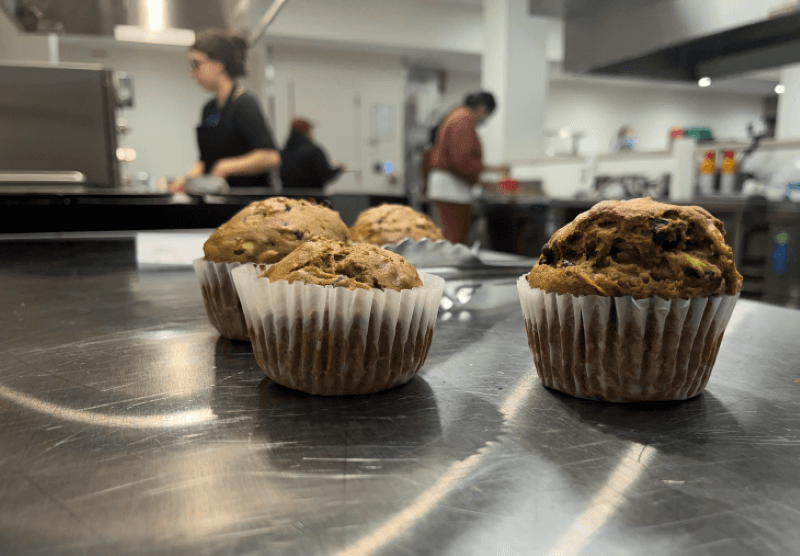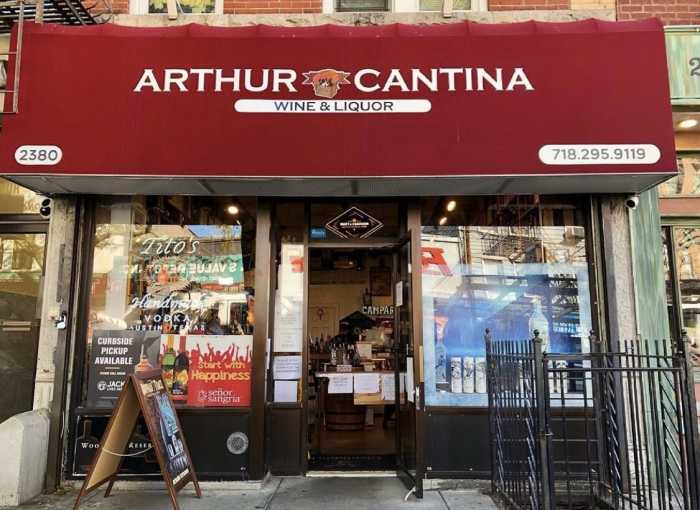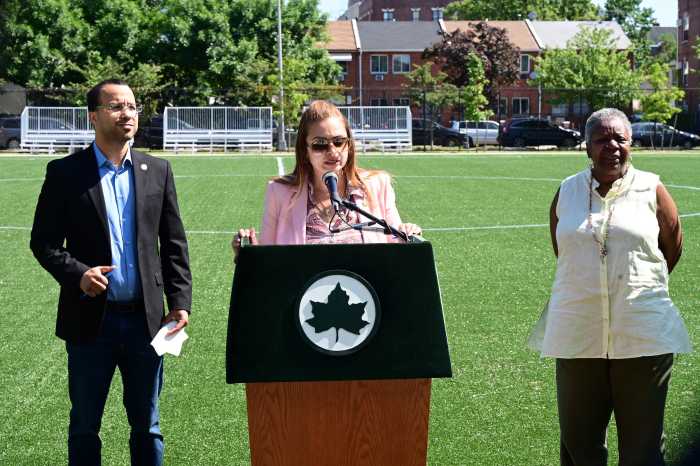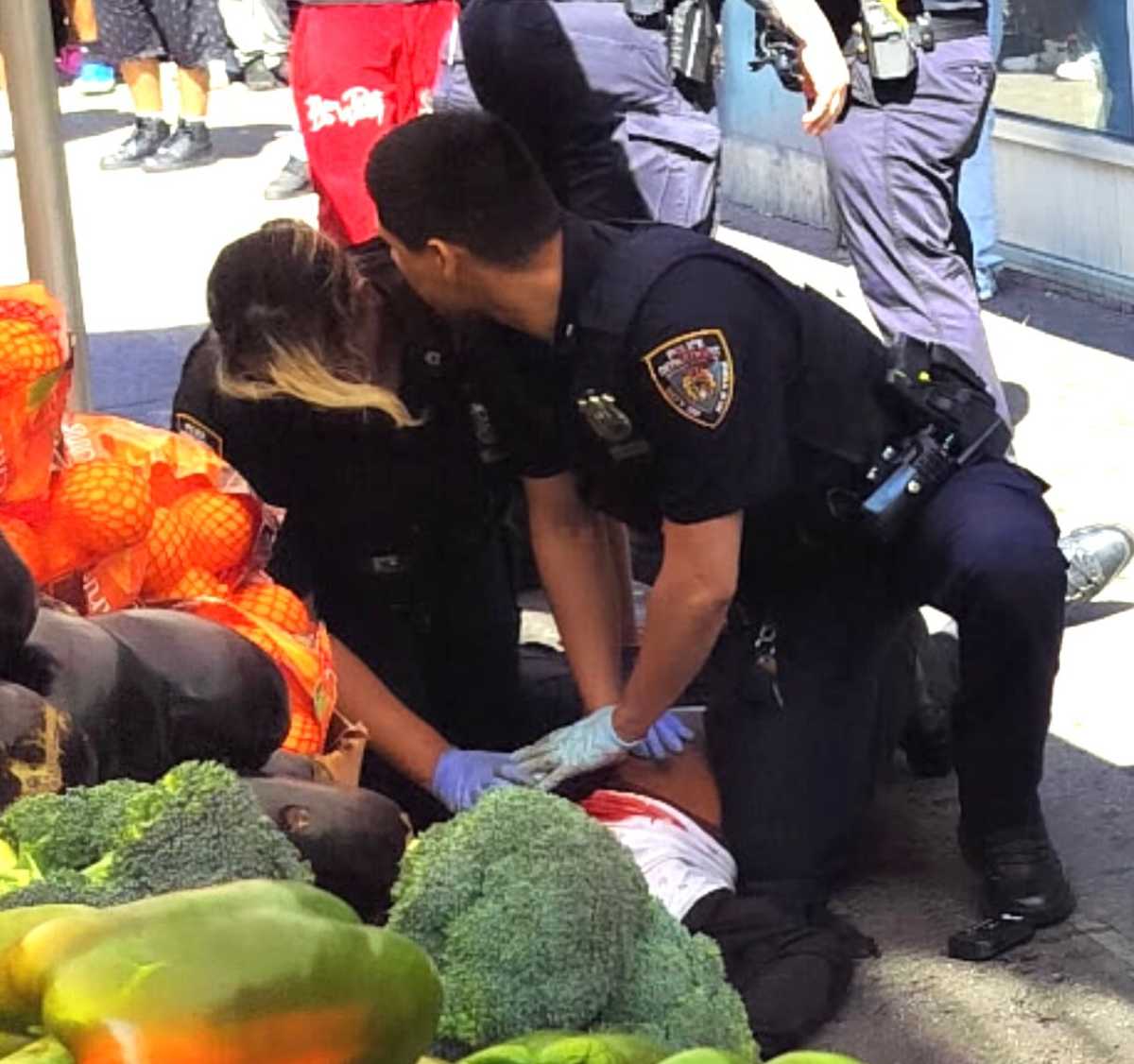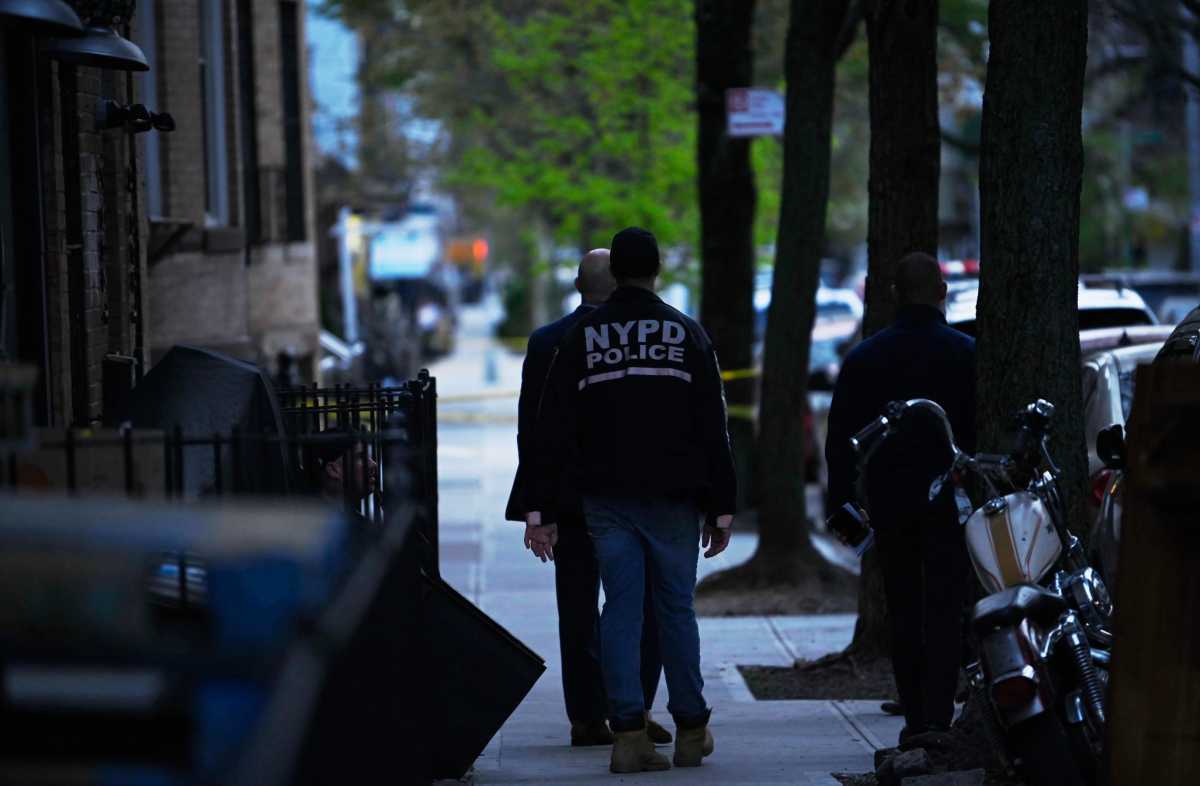With 44 years of baking under her belt and a thriving Harlem cake business, Charmaine Jones has earned the moniker “Cake Diva.” But even a Cake Diva can learn new culinary tricks, having recently taken part in the $5 cooking class at St. Barnabas Hospital’s (SBH) Health and Wellness Center Teaching Kitchen in Belmont.
SBH, a teaching hospital, has an extensive campus located in Belmont — one of the borough’s lowest-income neighborhoods grappling with health disparities, food insecurity and affordability — and since fall 2020, its teaching kitchen has aimed to improve health outcomes through healthy tweaks to an array of dishes.
“I came here to cook some healthier sweets and treats … because nobody’s getting any younger, and generally things require less sugar,” said Jones. “Some people have dietary requirements, and being able to cater to that through new techniques allows me to offer something new to my customers.”
The inside of the Teaching Kitchen is reminiscent of a grand Food Network stage with state-of-the-art cooking counters, a pantry stocked with every spice and herb you can think of, and fresh Bronx-raised vegetables grown on the rooftop of SBH’s three-story building, which also includes hard-working, honey-producing Bronx bees.
The Bronx is last in the state in health outcomes, which includes nutritional health and wellness measures, and a scarcity in fresh food suppliers and markets. The onset of food deserts, lead residents in the Bronx to rely on bodegas.
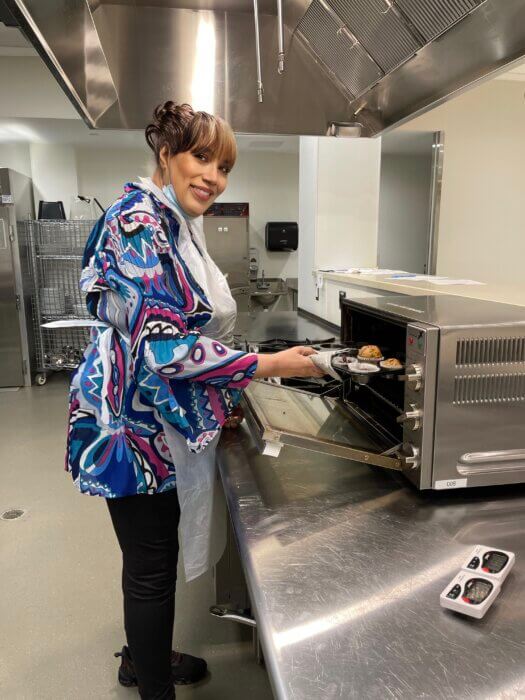
According to NYC’s most recent Food Metrics Report in 2021, the number of food insecure New Yorkers is approximately 1.4 million, with more than 230,000 of its predominantly Black and Hispanic residents without access to nutritious, affordable food.
In December 2022, nearly 2.9 million New York households were enrolled in SNAP (Supplement Nutrition Assistance Program, previously known as food stamps), which is not accepted everywhere. In March, many of those benefits have all but gone away, leaving many without a safety net, amid high inflation in the nation’s grocery market.
“I think the main and most important thing we do here is try to work with everybody’s budget,” said Yanir Cedeno, a chef instructor at the Teaching Kitchen. “So we have a lot of recipes that have organic ingredients and things like that. But we also try to work with things that they could find in their pantry and that are accessible to them based on what they have available in supermarkets.”
In-person classes at the SBH Teaching Kitchen — part of a $156 million buildout of SBH’s 50,000-square-foot health and wellness facility in late 2020 — were interrupted by the pandemic. Cedeno said the virtual classes were “a challenge” as some of the students didn’t have internet access or others struggled without a true hands-on experience.
The pandemic changed cooking and eating habits for many, with 85% of Americans having made changes to prepare and eat healthier food, according to the International Food Information Council’s (IFIC) 2020 Food and Health Survey.
Since returning to in-person classes in May 2021, Cedeno, along with fellow chef instructor Wanda Mendez, have created an “immersive experience” that aims to cook familiar, traditional meals in nontraditional ways.
Catering to Belmont’s majority-Hispanic district, the teaching kitchen puts a healthy spin on classic Latin-style dishes like locrio de pollo, but with simple substitutions in lieu of high-salt additives like Adobo.
“These are dishes I grew up with, and the joy is that in can be a simple tweak to still have the flavor and (be) familiar, but just a little healthier,” said Mendez. “We want these dishes to be simple enough and ingredients affordable, easy and tasty enough for our students to replicate at home.”
The kitchen holds classes on Tuesday and Thursday, often in noon-to-afternoon time slots. The classes are welcome to all who are willing to don an apron, and participants can work solo or in pairs.
“For anyone thinking about doing this, I say, bring your ass to class,” said Jones. “You have so much access to any food you can think of, you learn how to make good dishes and take some home and for $5 bucks? You can’t beat that.”

